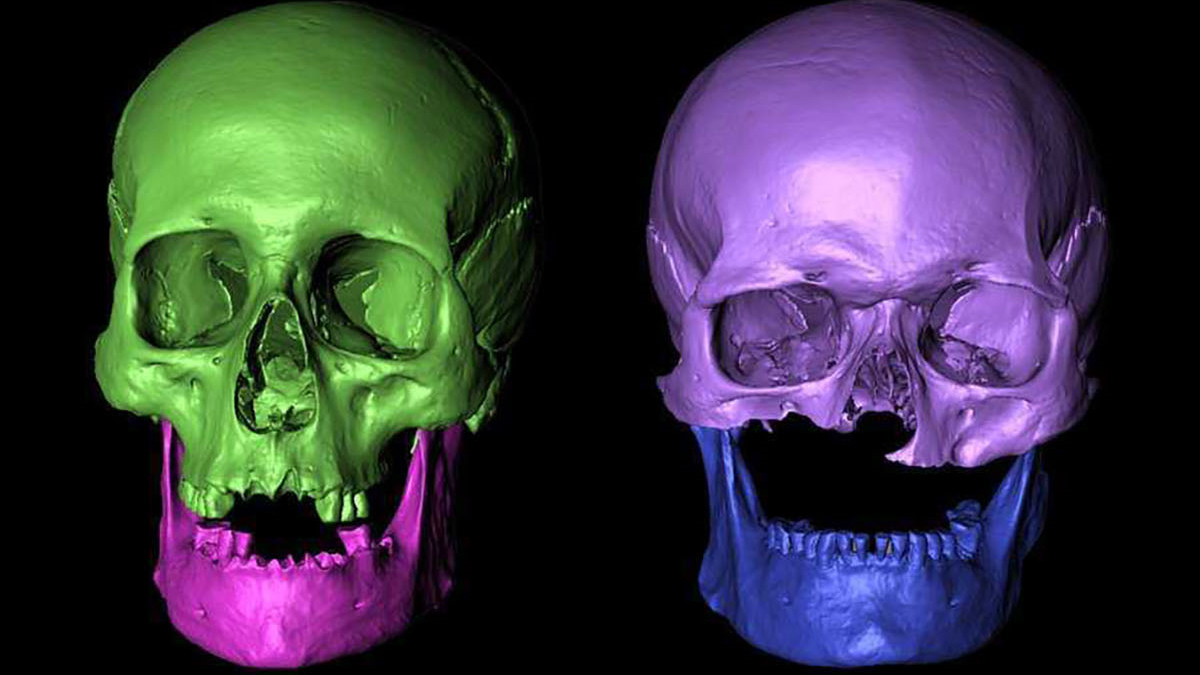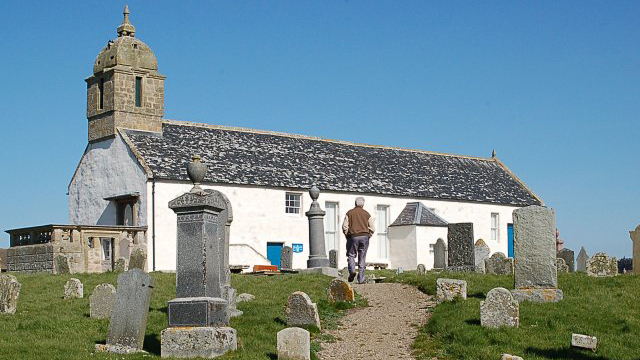Who lies in the tomb of the 'Six-Headed Chief'? DNA reveals clues.

A strange grave found in Scotland holding the medieval remains of what was thought to be a single man surrounded by five skulls — dubbed the "Six-Headed Chief" — is starting to divulge its secrets. A new DNA analysis now suggests the bones and skulls belong to members of the same extended family.
After the burial was discovered in 1997 near the altar of a former parish church at Portmahomack, a fishing village in the Easter Ross region, archaeologists soon realized two people had been buried in the same grave and surrounded by four disembodied skulls.
The latest research reveals the two men were buried between the late 13th and early 15th centuries, and were cousins or an uncle and nephew; and three of the four skulls came from the same family — the grandfather, father and mother of the second man. Another relative, probably the son of the second man, was buried nearby.
Related: 25 grisly archaeological discoveries
The fourth skull dated from between the eighth and 10th centuries, and was originally buried in a nearby monastic cemetery. Archaeologists now think the skull belonged to a Pictish monk, which was removed from the monastic cemetery and kept as a prized family relic.
Placing disembodied skulls beside a body in a grave is "almost unheard of" in Scotland at the time, archaeologist Cecily Spall of FAS Heritage, who leads the fieldwork at the site, told Live Science.
"You can find examples in the Neolithic and the Bronze Age where body parts were used for worship, but this is something completely different," Spall said. "In the medieval period, harvesting the graves of your parents and grandparents for body parts and putting them into a contemporary burial is about as unusual as it gets."
Get the world’s most fascinating discoveries delivered straight to your inbox.
Highland warriors





The man first buried in the grave probably died from extreme violence — he was almost certainly killed by a blow that cut away part of his face, said osteologist Shirley Curtis-Summers of the University of Bradford in the U.K.
"The attacker would have been facing the victim and delivered the fatal blow across the right-side of the face with a sword large and sharp enough (such as a broadsword) to cut through the facial bones," Curtis-Summers told Live Science in an email.
The man would have stood at 5 feet 9 inches (175 centimeters) — the tallest of all the ancient skeletons excavated at Portmahomack — and his burial in the center of the parish church suggested he was someone of great importance, she said.
Related: In images: Cut marks from samurai swords and machetes
Archaeologists initially thought the remains dated from the 1480s, when the church was the scene of fighting between two Highland clans, the Rosses and the Mackays, Spall said.
Several raiders from Clan Mackay had been killed by warriors from Clan Ross, and the rest took refuge in the church; but the Rosses set fire to it, killing everyone inside, she said — a conflict known as the Battle of Tarbat, from the name of the local parish.
But radiocarbon dating shows the people in the grave were buried several generations before the Battle of Tarbat, Spall said, although it's possible they had family connections to people involved in the later battle.
The church was rebuilt after the fire in the 1480s; it now houses the Tarbat Discovery Center, which displays archaeological artifacts from the site and relates the local history.
Strange burial
The "six-headed chief" may have been a local leader who suddenly died a violent death. In this case, — the burial of the second man in the same spot, possibly up to a generation later, was possibly an attempt to enhance the connections of his family with the first man, she said. That might also explain why the skulls of the second man's ancestors were also put into the grave — a decision probably made by the second man before his death, she said.
"It suggests to us that he is going out this way to legitimize his particular succession in taking over the leadership of the community," she said. "For some reason, they were in a very stressful situation — potentially a time of war or a local dispute," she said. "Their leader was slain, and they needed to legitimize who followed him."
Curtis-Summers said the strange style of burial was an indication that the family was locally important.
"The fact they went against the usual burial type of the time by adopting this striking mortuary rite separates them out as a special group within their community at Portmahomack," she said.
Originally published on Live Science.
Tom Metcalfe is a freelance journalist and regular Live Science contributor who is based in London in the United Kingdom. Tom writes mainly about science, space, archaeology, the Earth and the oceans. He has also written for the BBC, NBC News, National Geographic, Scientific American, Air & Space, and many others.


